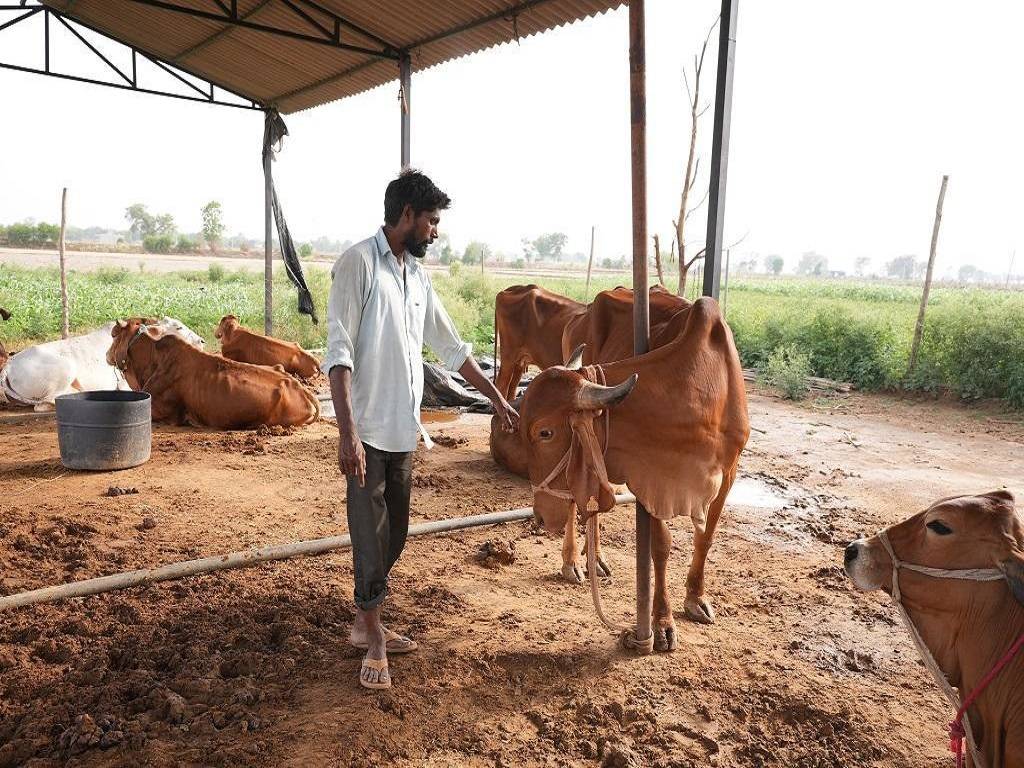
Mangatram, a dairy farmer from Lokra village in Haryana's Gurugram district, had high hopes when he quit his job with Hero Honda 15 years ago.
Initially, he made a nice living through dairy farming, and then he went on to become a veterinary doctor. He believed that dairy farming had a bright future and that this education would aid him in his milk business and enable him to effectively help the animals.
Initially, he made a nice living through dairy farming, and then he went on to become a veterinary doctor. He believed that dairy farming had a bright future and that this education would aid him in his milk business and enable him to effectively help the animals.
Mangatram began with a pair of buffaloes. He continued to buy cows of the Gir, Sahiwal, Rathi, and Tharparkar breeds the next year, increasing their numbers year after year. It was going well until the end of 2021, when he realized that animal husbandry was no longer a viable industry.
He had to leave animal farming due to a significant spike in the price of feed. He began progressively weaning his 39 milch cows in February-March 2022. The dairy farm had 28 cows removed before the end of April.
His milch cow is worth Rs 80,000-90,000 on the market, but he sold most of them for Rs 5,000-7,000. He gave ten cows to Rajasthan's nomadic Raika tribe for free. They currently have only seven adult cows, two calves, and two bulls.
The farmer, who lives in the Lokra village in Gurugram's Manesar tehsil, says that the rising cost of fodder is making it hard to feed livestock.
He purchased straw at a cost of Rs 1,500 per quintal this year. Last year, he paid around Rs 425 per quintal for the same straw. That means, the price of straw has increased by more than thrice in only a year.
According to Mangatram, a cow consumes 5 kg of dry fodder, 6 kg of animal feed, and 10 kg of green fodder on average. This indicates that a cow's daily food costs Rs 260.
This does not include the expense of labor or medications, which each cow costs Rs 2,000. When we transfer this expense per day of a cow to a year, we discover that fodder and feed account at just approximately 95,000 rupees.
Aside from that, there is a total expenditure of Rs 24,000 for medicines and labor costs. That is, the annual cost of a cow is around Rs 1.19 lakh.
According to the farmer, a cow produces 2,500-3,000 litres of milk each year. In a year, there are two to three months of dryness, during which the cow does not produce milk.
Mangatram sells milk to Haryana's Vita Cooperative Society for Rs 25-26 per litre. This implies he earns between Rs 62,500 and Rs 65,000 by selling cow milk.
He was losing Rs 54,000 per cow every year as a result. He stated that he is finding it more difficult to handle this loss. Due to the rising difference between expenditure and income, his family lost Rs 2.5-3 lakh between December 2021 and March 2022.
Mangatram does not believe that fodder will get less expensive in the future. Mustard has been planted on 70% of the land in his village, while wheat planted on the remaining 30%, which might cause higher price.
Experts predict that if wheat acreage declines and mustard prices remain high, the price of straw will not fall in the next five years. Straw from wheat harvests is the most common source of dry food, and prices of straw are soaring in several states, including Haryana, this year due to lower wheat acreage.
There were 450 cows in his village a year ago, but owing to a lack of fodder, residents have sold about 300 cows, according to Mangatram.
Mangatram is intending to sell his remaining cows and maybe stopping dairy farming entirely since he believes the situation will worsen in the future.
He's begun raising foreign breed dogs on the dairy farm, and he's thinking of starting a dog farm. He claims that selling puppy dogs will earn him more money than growing cows.
















